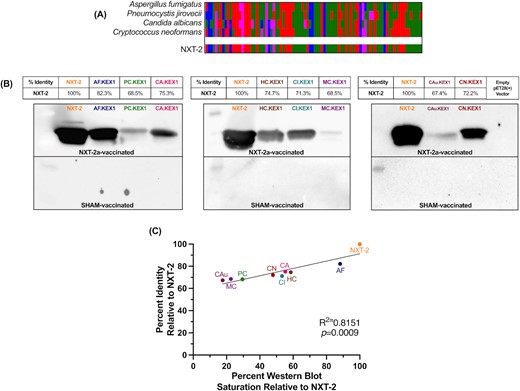2023-01-31 カリフォルニア工科大学(Caltech)
◆地質学的な測定によると、30億年前の地球の大気は、人為的な気候変動によって引き起こされた現在のレベルよりもはるかに高いCO2濃度で、太古のシアノバクテリアが「食べる」ために十分な量を持っていた可能性があります。しかし、数十億年の地球の歴史の中で、大気中の二酸化炭素濃度は減少し、そのため、これらの細菌は生き残るために、二酸化炭素を抽出する新しい戦略をとる必要があったのです。そのため、現代のシアノバクテリアは、古代の祖先とはまったく異なる姿をしており、低濃度の二酸化炭素を補うために、二酸化炭素濃縮機構(CCM)と呼ばれる複雑で壊れやすい構造を持っている。
◆このたび、カリフォルニア工科大学の新しい研究により、CCMがどのように進化したかが明らかになり、進化地球生物学分野における長年の謎が解かれた。この研究では、現代の生物の古代の祖先をモデル化するために遺伝学的手法を用い、異なるバージョンの細菌を系統的に実験し、進化経路の可能性を明らかにすることが可能になりました。
◆シアノバクテリアは、ルビスコと呼ばれる酵素の助けを借りて、二酸化炭素を「食べる」のである。ルビスコは、作用が遅く、CO2の代わりに他の分子と反応する傾向があるため、簡単に言えば、あまり良い働きをしていない。ルビスコの働きが悪くても、シアノバクテリアは代謝するのに十分なCO2を確保することができるのです。しかし、数十億年の間に大気中のCO2濃度が大幅に低下したため、現代のシアノバクテリアは、細菌自身の体内にCO2を濃縮し、ルビスコの効率を高めるCCMを進化させたのである。
◆この新しい研究で、研究チームは、CCM構造の古代の反復の可能性をモデル化することに着手しました。そのために、大腸菌を遺伝子操作して、代謝にCO2を必要とするようにした。大腸菌を扱うための遺伝学的ツールは確立されているので、シアノバクテリアそのものを扱うよりも、このモデル系を使った方が扱いやすいのだ。研究チームは、CCMを構成する20の遺伝子を持つ大腸菌株を作製し、遺伝子を系統的に追加、削除、調整することで、CCM構造のあらゆる進化的軌跡をモデル化することに成功した。
◆このようにして、Flamholzと彼のチームは、複雑な現代のCCMの出現につながる生物学的に実行可能な軌道が、実際には複数存在することを発見した。
<関連情報>
- https://www.caltech.edu/about/news/genetic-engineering-sheds-light-on-ancient-evolutionary-questions
- https://www.pnas.org/doi/10.1073/pnas.2210539119
バクテリアのCO2濃縮機構の進化に伴う軌跡 Trajectories for the evolution of bacterial CO2-concentrating mechanisms
Avi I. Flamholz ,Eli Dugan,Justin Panich,John J. Desmarais,Luke M. Oltrogge,Woodward W. Fischer,Steven W. Singer,David F. Savage
Proceedings of the National Academy of Sciences Published:December 1, 2022
DOI:https://doi.org/10.1073/pnas.2210539119

Significance
The emergence of biological novelty is often coupled to the evolution of Earth’s chemical environment. Here, we studied how the evolution of a bacterial CO2-concentrating mechanism (CCM)—a complex, multicomponent system that enables modern CO2-fixing bacteria to grow robustly in environments with low CO2—depends on environmental CO2 levels. Using a “synthetic biological” approach to assay the growth of the present-day bacteria engineered to resemble ancient ones, we show that it is possible to explain the emergence of bacterial CCMs if atmospheric CO2 was once much higher than today, consistent with geochemical proxies. Taken together, our results delineated an unexpected “CO2-catalyzed” pathway for the evolution of bacterial CCMs, whose multiple emergence has been challenging to understand.
Abstract
Cyanobacteria rely on CO2-concentrating mechanisms (CCMs) to grow in today’s atmosphere (0.04% CO2). These complex physiological adaptations require ≈15 genes to produce two types of protein complexes: inorganic carbon (Ci) transporters and 100+ nm carboxysome compartments that encapsulate rubisco with a carbonic anhydrase (CA) enzyme. Mutations disrupting any of these genes prohibit growth in ambient air. If any plausible ancestral form—i.e., lacking a single gene—cannot grow, how did the CCM evolve? Here, we test the hypothesis that evolution of the bacterial CCM was “catalyzed” by historically high CO2 levels that decreased over geologic time. Using an E. coli reconstitution of a bacterial CCM, we constructed strains lacking one or more CCM components and evaluated their growth across CO2 concentrations. We expected these experiments to demonstrate the importance of the carboxysome. Instead, we found that partial CCMs expressing CA or Ci uptake genes grew better than controls in intermediate CO2 levels (≈1%) and observed similar phenotypes in two autotrophic bacteria, Halothiobacillus neapolitanus and Cupriavidus necator. To understand how CA and Ci uptake improve growth, we model autotrophy as colimited by CO2 and HCO3–, as both are required to produce biomass. Our experiments and model delineated a viable trajectory for CCM evolution where decreasing atmospheric CO2 induces an HCO3– deficiency that is alleviated by acquisition of CA or Ci uptake, thereby enabling the emergence of a modern CCM. This work underscores the importance of considering physiology and environmental context when studying the evolution of biological complexity.


